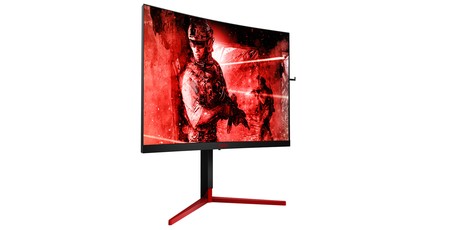
Performance Analysis
The colour gamut reading of 99 percent sRGB coverage is a good start, but out-of-box performance here is a tad lacking in a few areas. A contrast ratio of 500:1, for example, measures fairly low compared to competing screens, with the TN panel here undoubtedly holding AOC back. There’s plenty of brightness on tap, at least, with the 90 percent default setting hitting 352.7cd/m2. Full brightness, meanwhile, falls just short of the claimed 400cd/m2 at 380.9cd/m2.
The image also has a warm tint out of the box, confirmed by a white point reading of 5,800K. Thankfully, you can get closer to ideal by switching to the ‘Normal’ preset (6,300K) – we’re unsure why the monitor is set to ‘Warm’ by default, but a reset confirmed this to be the case. For those who prefer a cooler image, meanwhile, the 7,600K reading on the ‘Cool’ preset is acceptable and not overdone.
Colour accuracy and gamma are both strong points for this monitor, and it’s clear attention has been paid here. An average delta E value of 1.56 out of the box is excellent, and even the maximum deviation is lower than most. The default gamma setting also achieves a close-to-ideal curve; there’s no need to change to the others.
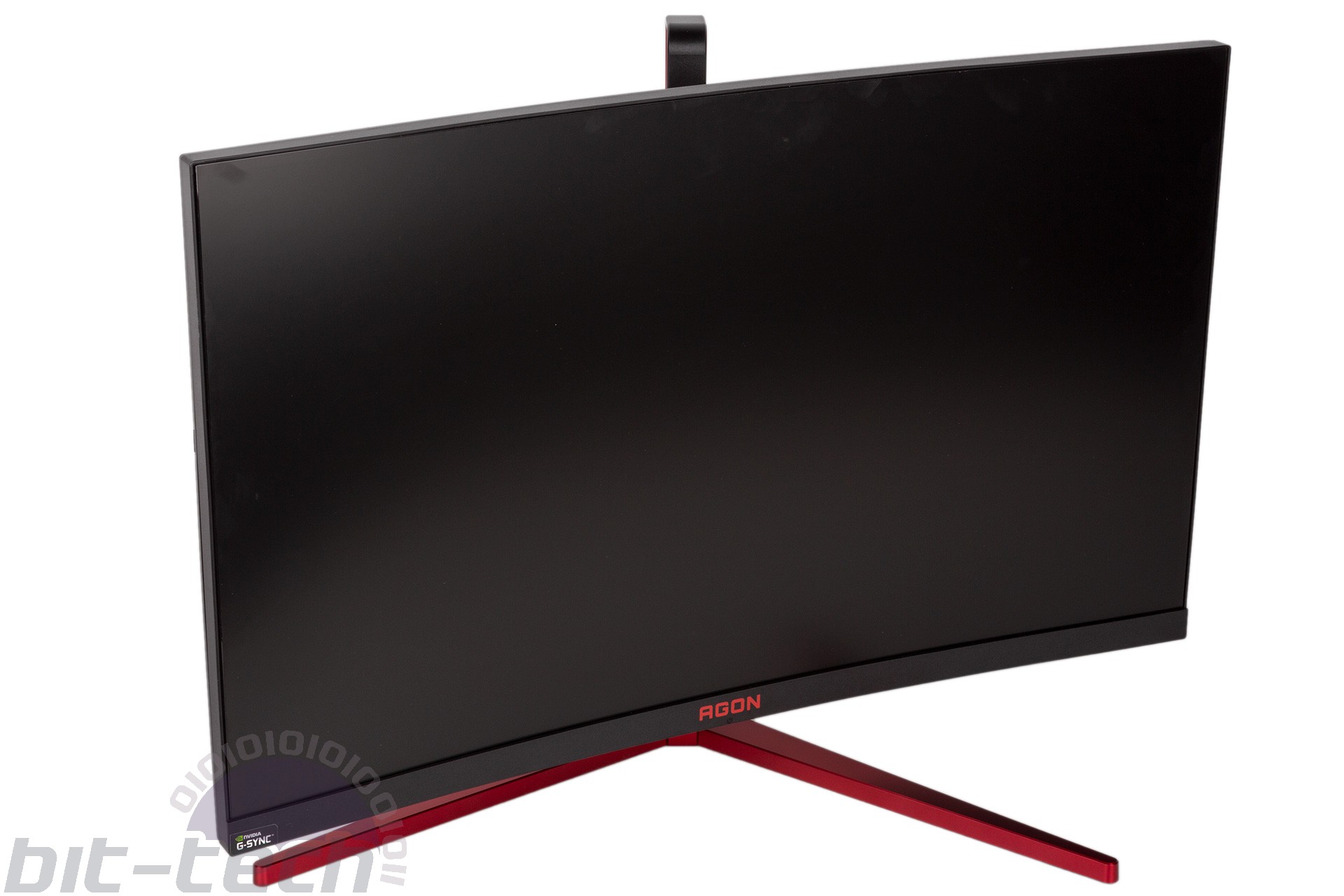
Screen uniformity is decent both for colour and luminance, although the former will be subject to viewing angle distortions that the colorimeter won’t pick up on. Backlight bleed was well contained, but we did note some colour shift in the bottom right corner when looking head on. Thankfully, this was only really apparent when you set the screen up to look for it and didn’t become a problem in normal use.
Subjectively the screen holds up rather well. Images have a natural look and don’t suffer from being washed out like they can on worse TN panels. The relative lack of contrast can be felt, but overall it’s a pleasant experience, and the anti-glare coating also does a decent job. When it comes to the curve, personal preference will dictate your feelings. We happen to rather like it for gaming and film watching, but we’re a bit more ambivalent with regards to productivity.
The primary application for this monitor, though, is of course gaming, and here the experience is truly excellent. With the refresh rate turned up to 165Hz, playing less demanding games feels incredibly satisfying. CS:GO, for example, takes on a new level of responsiveness (input lag feels very low too), although we will say that there’s little to no difference between 144Hz and 165Hz. G-Sync also ensures a great time in more demanding games where frame rates stay below 165fps, with screen tearing and stutter entirely absent.
The monitor has a few different overdrive settings, with ‘Medium’ being default. This is a good thing, as it’s definitely the best in terms of balancing the reduction of ghosting with the prevention of overshoot.
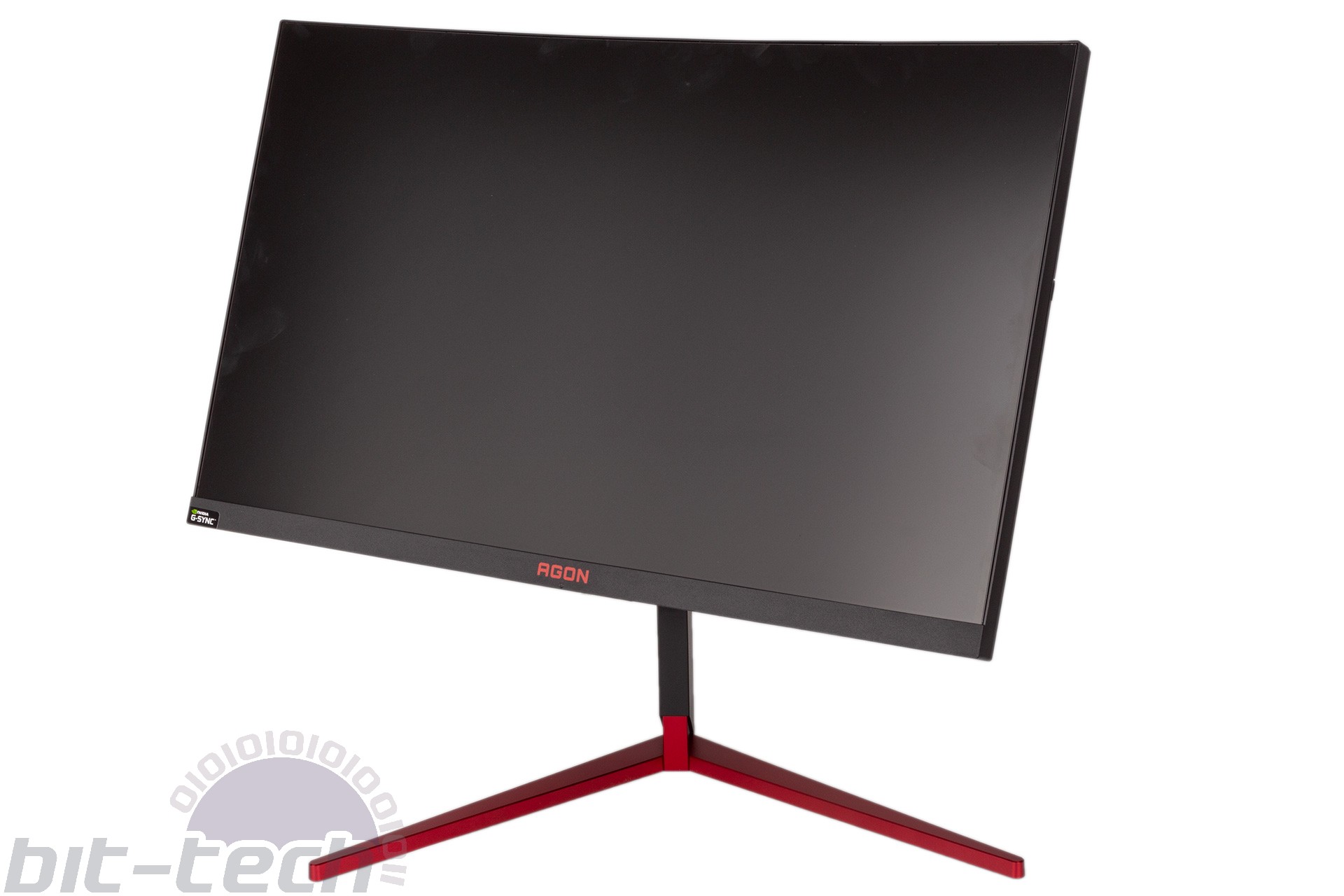
Since this is a G-Sync screen, Nvidia’s Ultra-Low Motion Blur (ULMB) technology is also supported. This imitates the strobing effect of old CRT monitors to reduce perceived motion blur as a result of eye movement. However, it can only operate at fixed refresh rates (85Hz, 100Hz, or 120Hz), meaning it cannot be used in tandem with G-Sync – it’s one or the other. The good news is that it works incredibly well, but the bad news other than the lack of G-Sync is that you will see obvious stuttering effects on objects if your frame rate falls below the selected refresh rate. As such, we suspect most will stick to G-Sync, but hardcore FPS players may want to experiment with it to see if it helps out enemy tracking, for example, and it’s certainly a nice little feature to have available.
Conclusion
Taken as a standalone product, the AOC Agon AG273QCG is desirable, especially for gamers. A 27” 1440p panel with a high and variable refresh rate is bang on the sweet spot, and gaming on this screen is really rather lovely. The curvature is – to our eyes – another bonus in this regard, and overall image quality is pretty good too; it’s a quality display that any gamer would be happy to use.There are some downsides, though. For example, we think there are multiple areas where the design could be bettered: VESA 100 mounting, easier to access USB ports, and higher quality headphone hooks all come to mind, and the menu navigation could do with a little TLC too, though it’s certainly not terrible. Thankfully, all of these are minor points; the Agon AG273QCG serves its primary purpose well.
However, taken in the context of the wider market, the Agon AG273QCG suddenly seems very expensive. For example, the Asus ROG Swift PG278QR at £560 has the same key specifications – though it isn’t curved – which makes the £750 asking price here very steep. For us, competitive pressure like this is enough to prevent us outright recommending this monitor, but if you’re willing to pay the premium for the combination of low response time and a curved G-Sync screen, you’ll be rewarded with a top notch gaming experience.

MSI MPG Velox 100R Chassis Review
October 14 2021 | 15:04

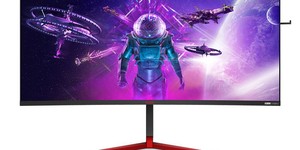

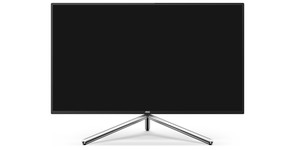




Want to comment? Please log in.